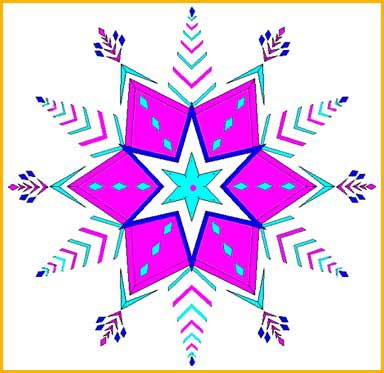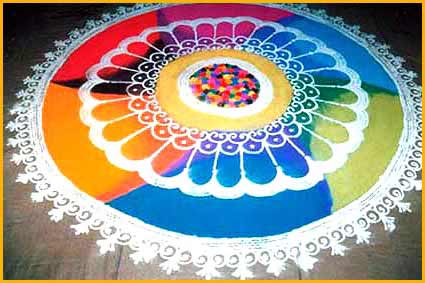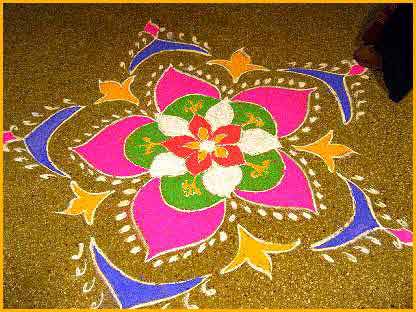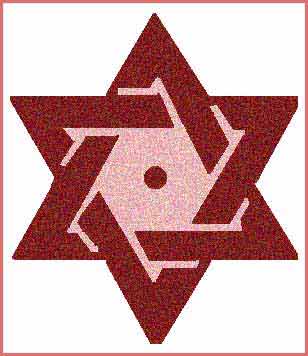Making Rangoli
During Diwali, Goddess Lakshmi is believed to visit homes that are well lit, so families decorate their homes. People wear their best clothes or buy new ones, children are given presents and new year greetings are exchanged through visits or Diwali cards. Thus, a Rangoli design is created on doorsteps to welcome everybody. Rangoli exudes a pattern in color that are specific for each region.During Diwali, in the art of floor painting, the central rangoli design is the symbolic one denoting the deity or the theme. Motifs generally created are lotus, fish, birds, snakes etc. which reflects the unity of man and beast. Most of the rangoli designs are circular exuding a sense of endlessness of time. Celestial symbols such as the sun, moon and other zodiac signs are also common themes for rangoli. Layered with symbolism is the lotus denoting Goddess Lakshmi, the unfolding of life, the heart or the wheel.
During Diwali, two interfaced triangles are created that indicates the deity of learning, Sarswati. Encircling this is a 24-petal lotus flower border, the outer circle being decorated with Lakshmi's footprints repeated in four corners. Sometimes the lotus petals are made in a triangular shape for variety. In north Bihar, Lakshmi's feet are drawn at the door, the toes pointing inwards to indicate her entrance.
Here is a fabulous array of Diwali Rangoli designs! Get inspired from these traditional yet extremely artistic Rangoli designs for Diwali and decorate your courtyard on this auspicious Diwali Festival. Please click on the images of these Diwali Rangoli Designs for a larger and clearer view.




No comments:
Post a Comment